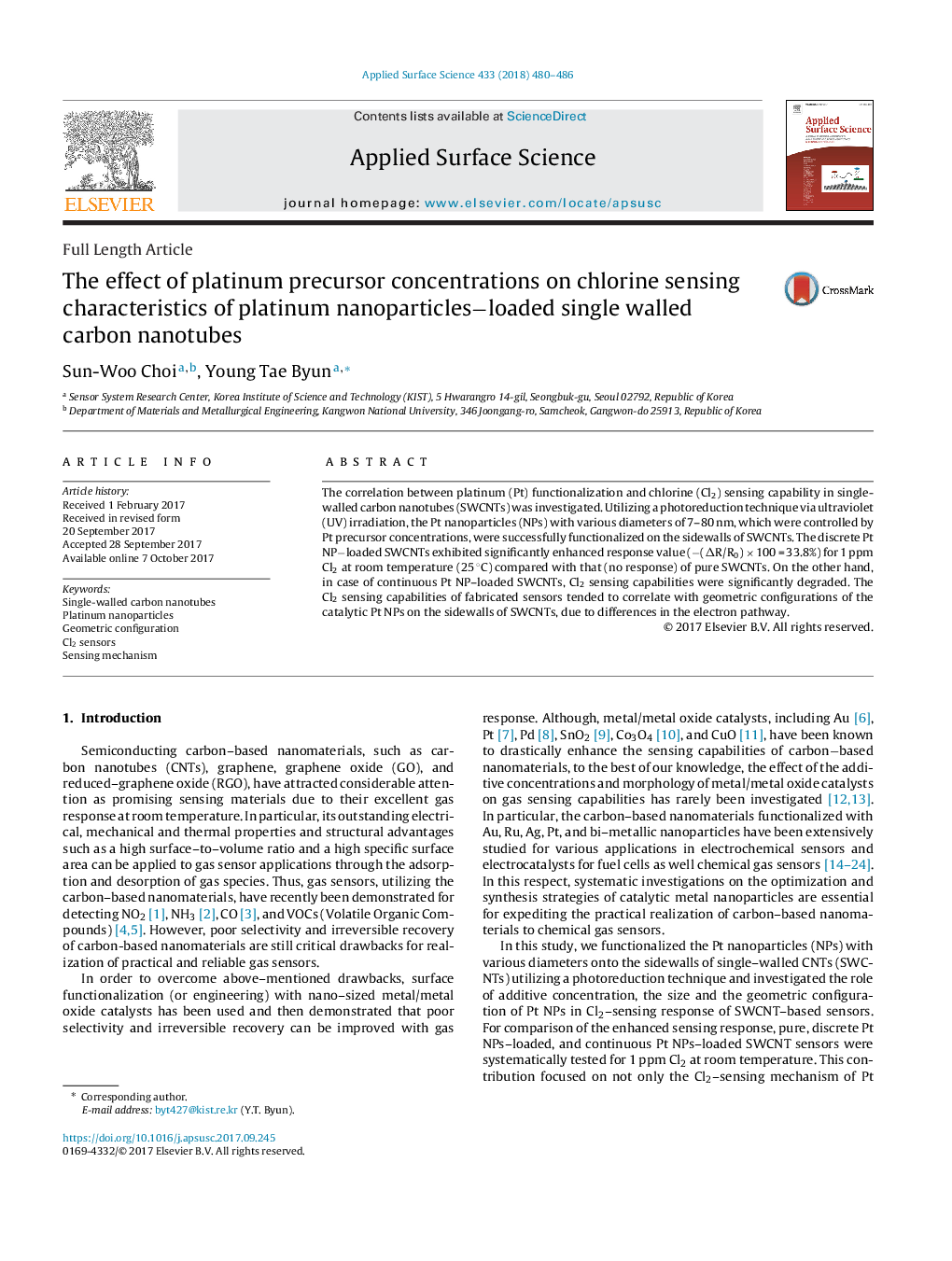| Article ID | Journal | Published Year | Pages | File Type |
|---|---|---|---|---|
| 7836459 | Applied Surface Science | 2018 | 7 Pages |
Abstract
The correlation between platinum (Pt) functionalization and chlorine (Cl2) sensing capability in single-walled carbon nanotubes (SWCNTs) was investigated. Utilizing a photoreduction technique via ultraviolet (UV) irradiation, the Pt nanoparticles (NPs) with various diameters of 7-80 nm, which were controlled by Pt precursor concentrations, were successfully functionalized on the sidewalls of SWCNTs. The discrete Pt NPâloaded SWCNTs exhibited significantly enhanced response value (â(ÎR/R0) Ã 100 = 33.8%) for 1 ppm Cl2 at room temperature (25 °C) compared with that (no response) of pure SWCNTs. On the other hand, in case of continuous Pt NP-loaded SWCNTs, Cl2 sensing capabilities were significantly degraded. The Cl2 sensing capabilities of fabricated sensors tended to correlate with geometric configurations of the catalytic Pt NPs on the sidewalls of SWCNTs, due to differences in the electron pathway.
Keywords
Related Topics
Physical Sciences and Engineering
Chemistry
Physical and Theoretical Chemistry
Authors
Sun-Woo Choi, Young Tae Byun,
